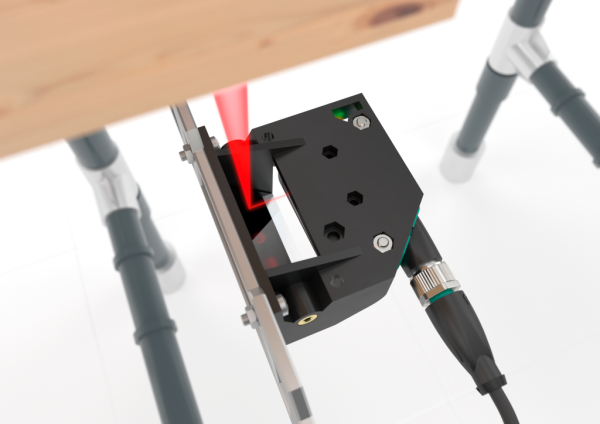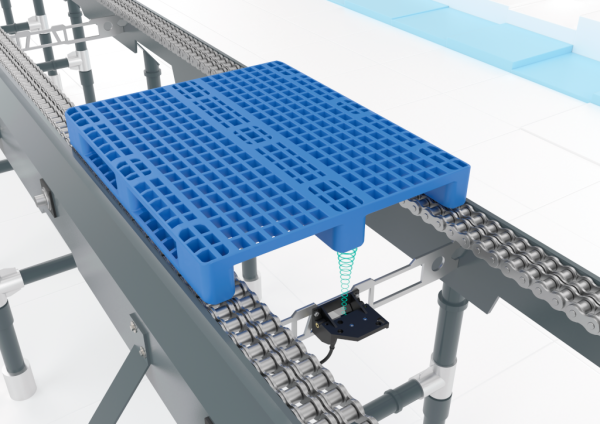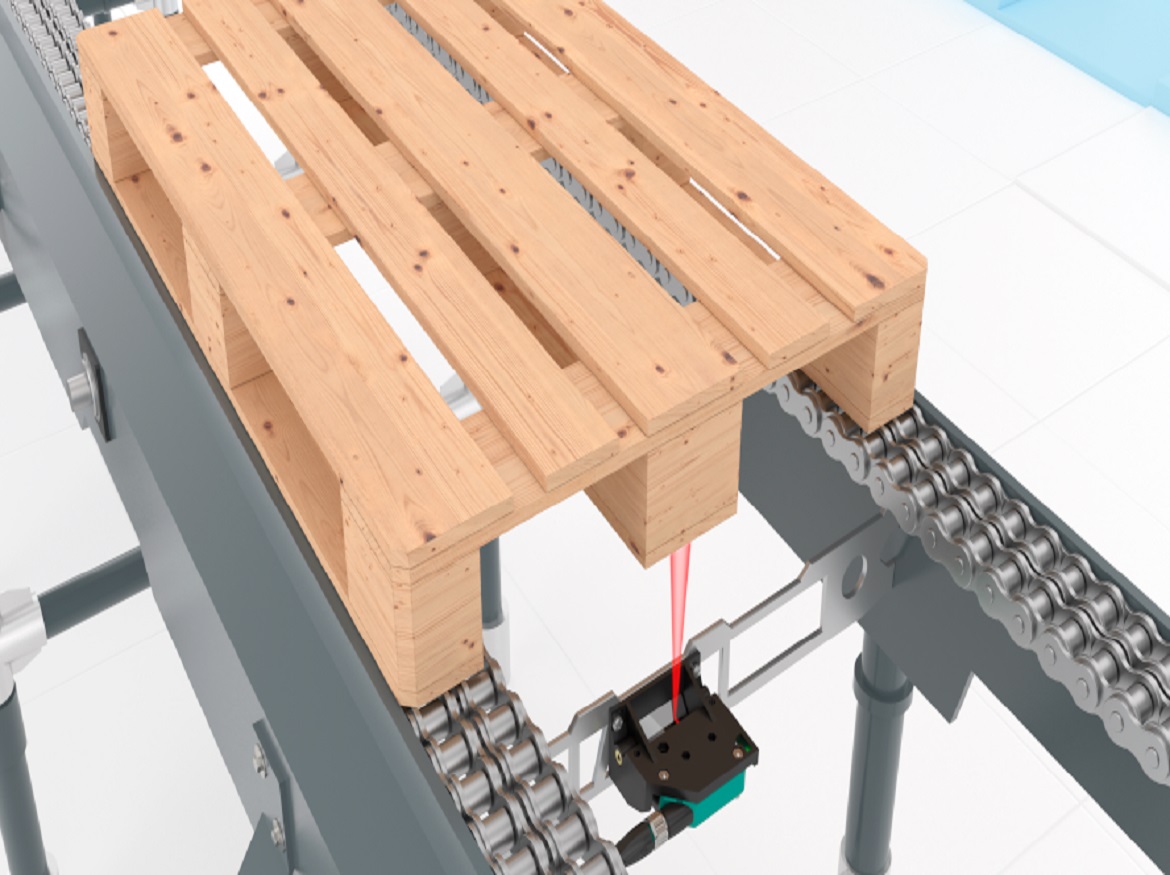Until recently, customized solutions were needed to identify various pallet types on roller conveyor systems, regardless of whether a company uses Euro pallets or unique plastic pallets. Pepperl+Fuchs created the Pallet Detector, an application-specific sensor system that enables flexible switching between two technologies, to increase the efficiency of this application. The technique makes it possible to identify several pallet kinds with a single solution. This blog post discusses the operation of this system and which version is best suited for each kind of pallet.
Optical or Ultrasonic—Pallet Detector with an Intelligent Mounting Concept

The Pallet Detector is not installed on the outside of the roller conveyor line like traditional systems are. Instead, it is integrated inside the line. On a crossbar inside the roller conveyor line, a sensor bracket with an integrated mirror is mounted for this purpose. The idea increases workplace safety while minimizing installation costs because it does not call for protruding round bars. In addition, the idea allows for flexible switching between several technologies: Depending on the situation, either a photoelectric or an ultrasonic diffuse mode sensor can be installed using the same sensor bracket. But which version should be used with which kind of pallet?
Euro Pallet Detection Using a Photoelectric Sensor Solution

It is advised to mount a photoelectric diffuse mode sensor utilizing the sensor bracket for common intralogistics applications. Typically used to identify Euro pallets, this Pallet Detector version is very affordable. The sensors can readily manage the quick cycles in intralogistics thanks to their high switching frequency of 250 Hz.
For this application, a specifically designed sensor version is employed: R20x diffuse mode sensors are outfitted with specialized software that accurately differentiates between dirt and objects to be detected. In circumstances of severe contamination, the sensors additionally have an alarm function that enables early cleaning procedures. Additionally, the bracket’s 45-degree angle helps to prevent dust and dirt from adhering to the sensor, allowing for dependable continuous operation with little maintenance.

Detecting Pallets Using a Photoelectric Sensor at a Glance:
- For standard applications, such as Euro pallets
- For fast cycles, such as in intralogistics
- Functions reliably even when dirt and dust are present in the environment
Special Pallet Detection Using an Ultrasonic Sensor
Even though the photoelectric solution is perfect for common applications, it has its limitations for unique applications. In these circumstances, a pallet detector bracket can easily be equipped with an ultrasonic sensor. This is helpful, for instance, in identifying plastic circulation pallets, which are frequently used in the food sector. Due to their brilliant green or blue surfaces and numerous nooks, these unique pallets are frequently difficult to detect by photoelectric sensors. Even diffuse mode sensors with a high pollution tolerance face challenges in extremely dusty locations like cement plants.
The Pallet Detector using Ultrasonic Technology is highly helpful in unique situations like these. All types of pallets can be detected by the Pepperl+Fuchs F77 diffuse mode sensor, regardless of color, surface structure, dust, or dirt. Pallets with many nooks and crannies can be reliably detected by the ultrasonic sensor’s broad sound beam.

Detecting Pallets Using an Ultrasonic Sensor at a Glance:
- For special plastic pallets with numerous recesses
- For circulating pallets in the food industry, for example
- For extremely dusty environments, such as cement works
The Pallet Detector—a Tailored Sensor Solution for All Types of Pallets
The Pepperl+Fuchs Pallet Detector offers a solution that covers both regular pallets and unusual pallets, whether upgrading current roller conveyor lines or developing new systems. This enables roller conveyor system manufacturers to offer customers from various industries a customized solution while enabling plant operators to evaluate both versions in their applications.
Click on the following link Metrologically Speaking to read more such blogs about the Metrology Industry.









